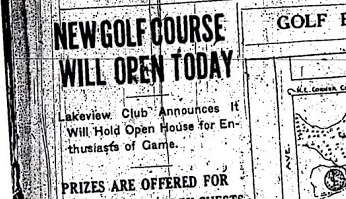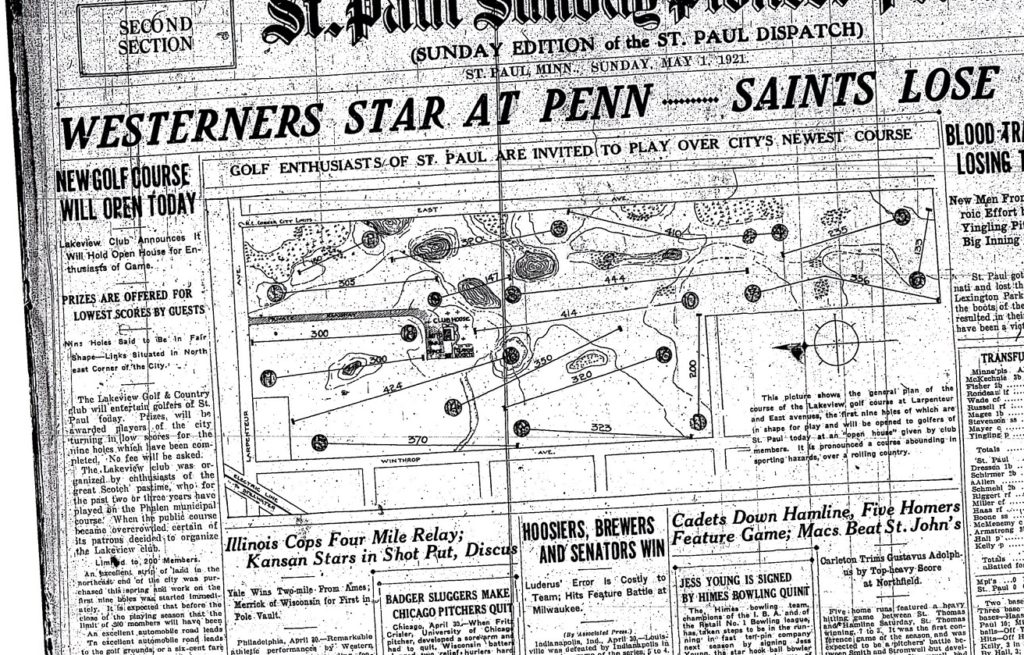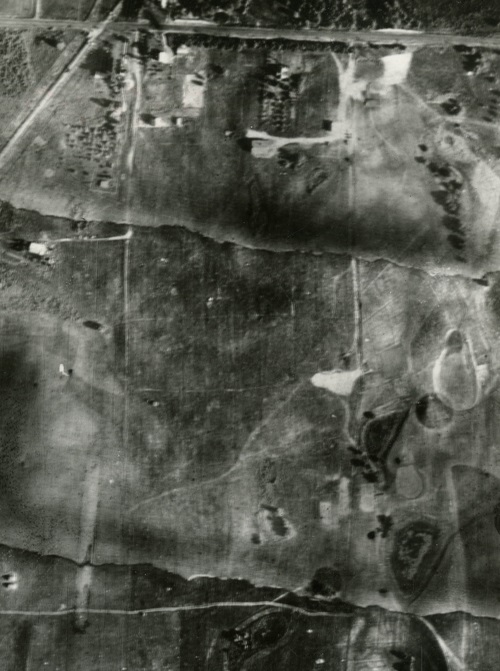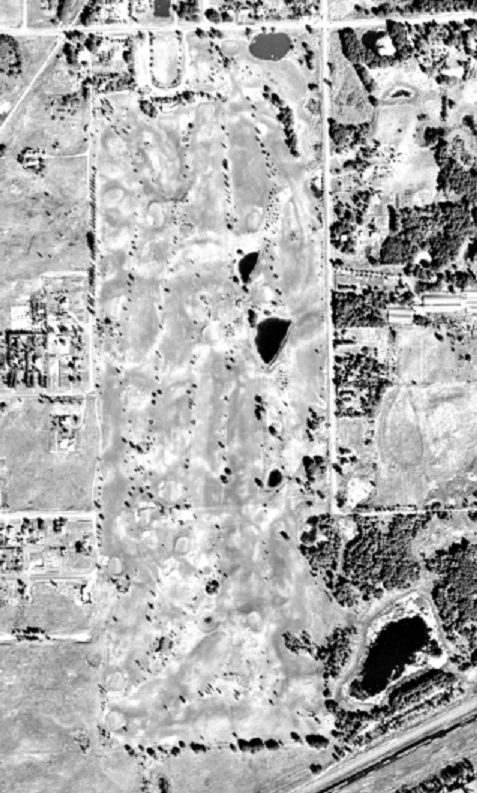Presenting a Minnesota golf mystery. See if you can figure this out faster than I did. Only took me two years.
Spoiler alert: I’ll be giving away the answer a few paragraphs hence. I guess that’ll take the “mystery” out of play, but whatever.
—————-
Check out, from the Minnesota Golf Association’s archived membership rolls, this list of “St. Paul” golf clubs from 1921:
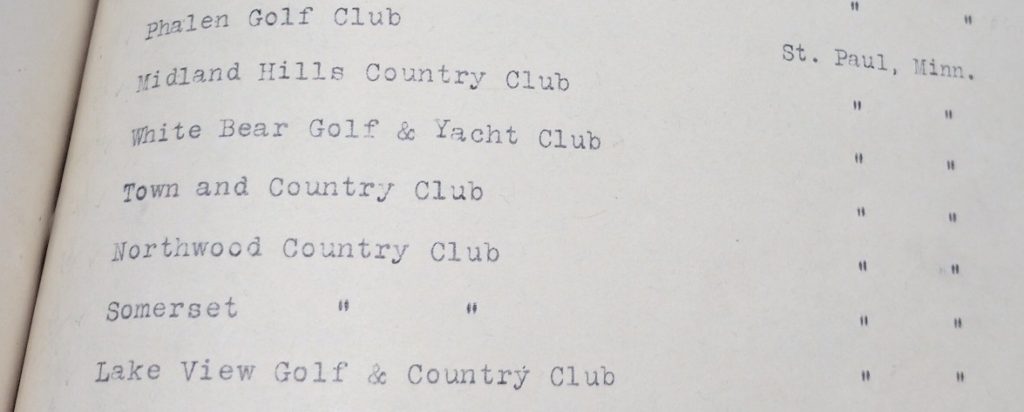
Refrain from geographical nitpicking, please, and scroll down to the final entry. (I’ll do the nitpicking — Midland Hills is in Roseville, White Bear Yacht Club is in Dellwood, Northwood was in North St. Paul, Somerset is in Mendota Heights. Something tells me the MGA didn’t feel the need to be geographically precise in those days, and that’s fine.)
OK, final entry in the photo:
Lake View Golf & Country Club (ditto marks indicating St. Paul).
Lake View Golf & Country Club? In St. Paul?
Never heard of it. What lake, what view, what golf, what country club? It was a mystery to me when in 2017 I was offered a look at the MGA archives and noticed the entry.
Care to take a stab at it?
There aren’t that many lakeside areas in or very near St. Paul, so some possibilities are easily eliminated. Lake View couldn’t have been tied to Phalen Park; that club was established in 1917 and is listed in the MGA membership roll pictured above. Lake View wasn’t tied to Como; that golf club’s course opened in 1930.
So … Lake View?
With other priorities in play, I set Lake View on the back burner for a year and change, though it would occasionally resurface to vex me. But I never could think of a golf course, extant or extinct, in St. Paul or within a few miles of it, that could have been called Lake View.
Twitter lent an unwitting hand in solving the mystery.
This February, while having a Twitter exchange with a golf historian on an unrelated issue, he tweeted to me this photo, taken from a page in the 1922 American Annual Golf Guide:
This was presumably the same club as Lake View in the MGA membership roll. Lake View (or Lakeview) Golf & Country Club, found!
Well, sort of. Except there really was no where there in the golf-guide entry. With my curiosity again piqued, I was off to the Minnesota History Center in search of Lakeview Golf & Country Club’s still-mysterious location. I struck gold (my gold standard is a low one) on one of the first microfiched sports sections I spooled up.
From the St. Paul Sunday Pioneer Press of May 1, 1921, this (click on the image for a larger view):
“NEW GOLF COURSE WILL OPEN TODAY,” read the headline on the left side of the page.
“The Lakeview Golf & Country Club will entertain golfers of St. Paul today,” the story began. “… The Lakeview Club was organized by enthusiasts of the great Scottish pastime, who for the past two or three years have played on the Phalen municipal course. When the course became overcrowded , certain of its patrons decided to organize the Lakeview Club.
“An excellent strip of land in the northeast end of the city was purchased this spring and work on the first nine holes was started immediately. It is expected that before the close of the playing season that the limit of 200 members will have been …” (paragraph cuts off)
The rest of the article describes the course’s rolling terrain, elevated vantage points and various holes. Accompanying the story was a five-column map of the grounds and the routing. At the perimeters of the map are the giveaways. The course was bordered by Larpenteur Avenue on the north and Winthrop and East avenues on the west and east, respectively (East Avenue is now McKnight).
St. Paulites and many Minnesota golfers will recognize the description. Lakeview Golf & Country Club was what came to be known as Hillcrest.
More written history follows, but if you were familiar with Hillcrest Golf Club, you won’t want to miss the photo/map near the end of this post.
The history of Hillcrest Golf Club is mostly well-documented. It was best known as the east metro’s Jewish golf club for more than a half-century, although those Jewish roots were first established at nearby Northwood Country Club in North St. Paul, which opened in 1915. Northwood was abandoned in the 1940s, and some of its Jewish members soon purchased Hillcrest, which was a public course at the time. Hillcrest was sold to a local pipefitters union in 2011 and abandoned in 2017. Its grounds are now vacant.
But the genesis of Hillcrest — or Lakeview, at the start — is less well known. There are no club documents from its earliest years, I’ve been told, and the only mentions of the club before it was launched that I know of are the aforementioned 1921 reference to Phalen golfers seeking a valve for overcrowding and a reference in a Minneapolis Tribune story from the same year suggesting the new Lakeview club was private. But it isn’t impossible to cobble together a short history of Hillcrest-when-it-was-Lakeview.
The Pioneer Press of April 24, 1921, touted the impending start of the golf season. The headline: “St. Paul to Have Two New Golf Clubs Equaling Best in the West.” The first of these was University Golf Club, which soon would be renamed Midland Hills and, through the talents of noted golf architect Seth Raynor (identified as “Rayner” and “Raymore” in the Pioneer Press story), would indeed become a regionally prominent golf club.
The second club mentioned was Lakeview, and though as Hillcrest it also would become a golf course of distinction, it is unlikely, considering its staggering pace-of-construction timeline, that it began as one.
“Lakeview golfers believe they have set a record in course construction,” a note at the end of the April 14 story reads. “On April 6 work was started on the first ten holes of their new course in Hayden Heights, and on April 10, players used the course for the first time. The record seems a remarkable one. The remaining eight holes will be constructed soon.”
I never did track down under whose breakneck-paced guidance the routing, tree-stump pulling, grading, fairway canting, bunkering and greens swaling of Lakeview was first engineered (yes, that’s gentle sarcasm). However, those who have played Hillcrest will note that the routing shown in the 1921 Pioneer Press map is different from what they played, and it apparently took only months for the membership to ponder a redesign of Five-Day Lakeview.
“Lakeview club golfers are planning to make an 18-hole course of their links,” read the opening of a story in the July 31, 1921, Pioneer Press. “… Tom Vardon, White Bear professional, will be in charge of operations which will get under way at the earliest possible moment.”
Vardon, who was the head professional at White Bear Yacht Club and designer of more than 40 Upper Midwest courses, is cited in almost all credible references as the original designer of Hillcrest Golf Club. It would be needless nitpicking to challenge that, so I won’t. “Mr. Vardon was impressed with the turf covering the tract and declared that it is of a variety that takes years to develop,” the Pioneer Press story continued. “The second nine holes will be constructed on land that has been under cultivation for years and must be plowed and seeded.”
The bulk of the Vardon re-routing of Lakeview lasted for decades, albeit with revisions under the direction of A.W. Tillinghast in 1936-37. The club’s name didn’t last nearly as long.
The Pioneer Press referred to the club as Lakeview for the rest of 1921 and in tournaments in April and May of 1922. On May 14, 1922, the newspaper reported that the clubhouse would be moved closer to Larpenteur Avenue at the club’s northern edge.
More references to Lakeview are found in July and August of 1922 and early April 1923. But on April 22, 1923, a Pioneer Press story mentioned a new watering system that had been installed at “Hillcrest,” and from that point, the club was listed as Hillcrest whenever I found a printed mention. I found no information on reasons behind the name change.
Which brings up a point I and others wondered about: What lake gave Lakeview its name?
The reference most likely was to Beaver Lake, one mile south of the midpoint of the Lakeview/Hillcrest grounds. However, none of the Hillcrest-connected folks I talked with said Hillcrest offered a view of Beaver Lake, though most conceded that there might have been such a view in the course’s less-densely wooded 1920s. On the other hand, a mid-1920s St. Paul fire insurance map designates the Beaver Lake area as “slough” with only a small body of water, and a 1923 aerial photo supports that designation. A 1945 aerial photo shows another body of water just off the southeast corner of the Lakeview/Hillcrest grounds, in what is now Maplewood (it is largely marshland now), but that appeared to be more pond-sized than lake-sized.
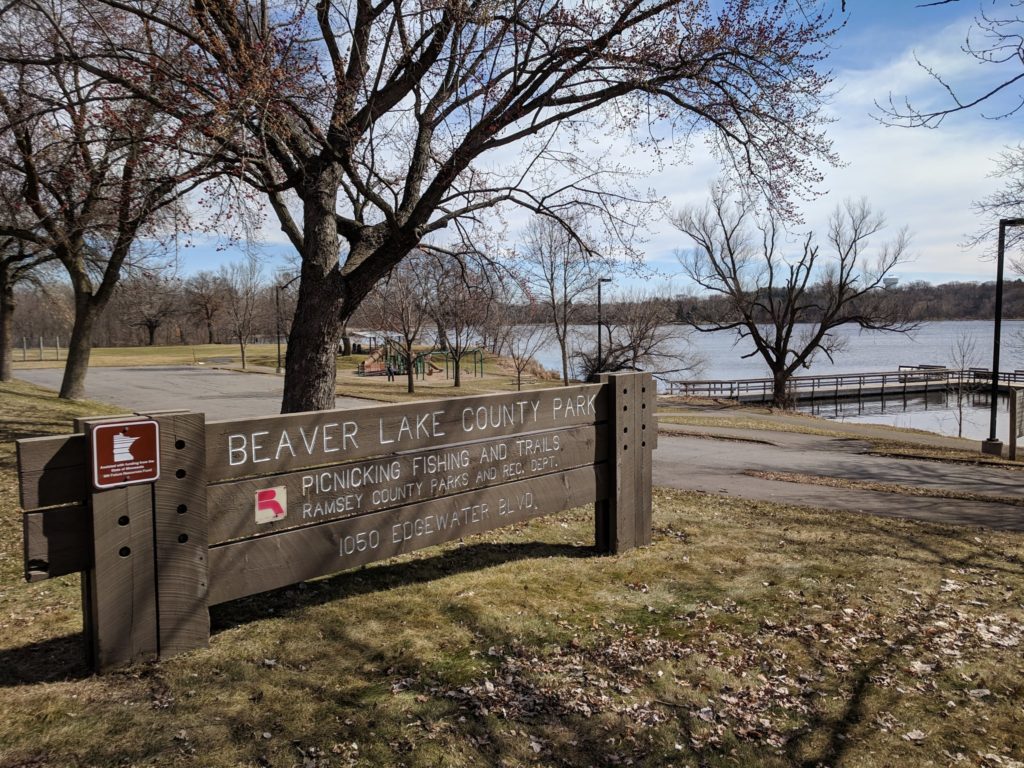
—————-
St. Paul resident Ross Walkowiak, who is well-versed in Minnesota golf history and far more adept technologically than I am, put together a graphic piece that should be of interest to anyone who was familiar with the routing of Hillcrest Golf Club. It shows an aerial photo of Hillcrest at the time of its closing in 2017, superimposed in red with the routing of Lakeview/Hillcrest’s original nine holes in 1921 plus the original proposed routing of a second nine. For reference, Larpenteur Avenue is the street at the top of the photo.
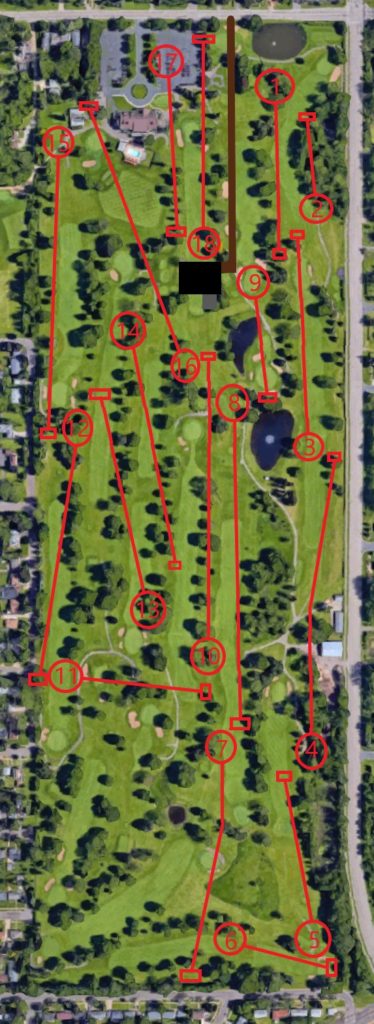
Below is a 1923 aerial photo of the Lakeview/Hillcrest and part of the Hayden Heights areas of St. Paul. The golf course is at the far right side of the photo, basically from top to bottom. There is a diagonal street at the top-left of the photo. I believe this was Furness Avenue, now Furness Trail/Furness Parkway, which was the streetcar line referenced in the American Annual Golf Guide entry and which would have provided transportation to and from the golf course. The streetcar line ran as far northeast as White Bear Lake and Mahtomedi, connecting with the famed Wildwood Amusement Park.
Below is a 1945 aerial photo of the Hillcrest Golf Club area. This photo and the previous one are courtesy of the University of Minnesota’s John Borchert Map Library.
Other Lakeview/Hillcrest notes:
— Carl Lindgren was the first professional at Lakeview. Lindgren was most notably known as a longtime pro at Visalia, Calif., and also had positions in Detroit Lakes, Minn., and Mandan, N.D., where he died at age 61 in 1956.
— In late 2017, as Hillcrest was closing down, I invited readers to share their memories of the club. I’m inviting them again, either via this story or via the link in this paragraph.
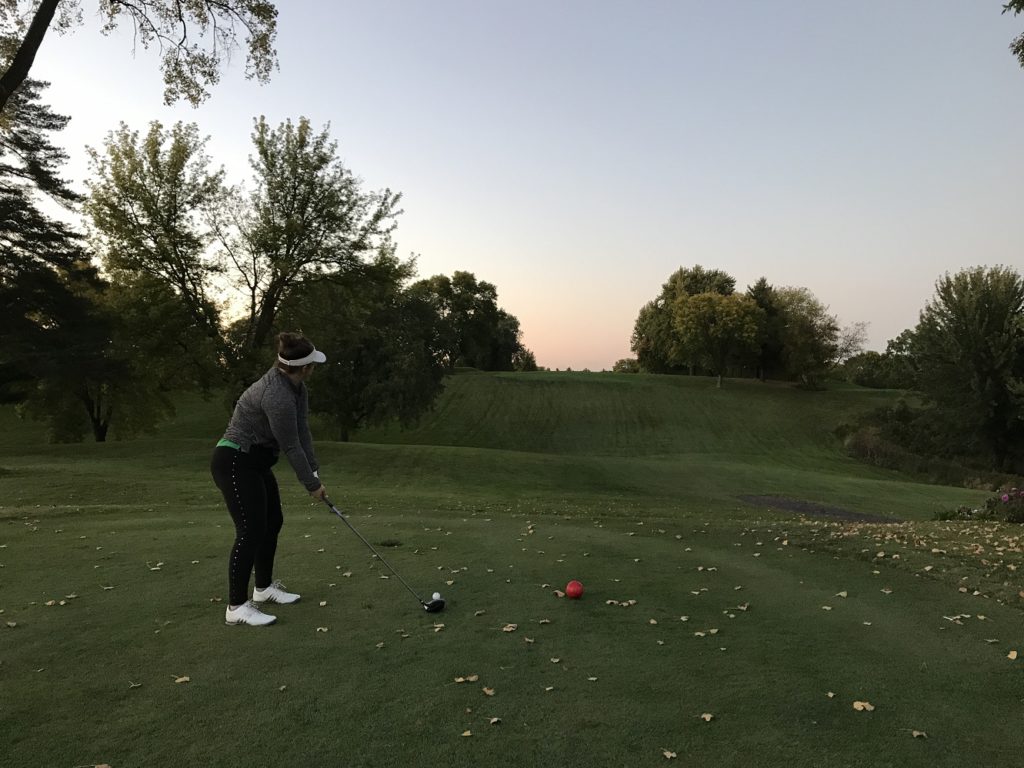
Soon-to-be-published post: An intriguing Hillcrest-area report that never came to fruition.
Thanks to those who contributed information and even speculation on early Lakeview/Hillcrest, including Ross Walkowiak, Dan Kelly, Rick Shefchik, Doug Mangine, John Hamburger and Mike Manthey.
Latest posts by Joe Bissen (see all)
- Another lost routing: Hilltop, Columbia Heights - June 19, 2024
- Two lost routes: First, Antlers Park - June 17, 2024
- Tree trouble and townball: Naeseth Country Club, Wanamingo - May 6, 2024
